“Most women use more brains picking a horse in the third at Belmont than they do picking a husband.”
|
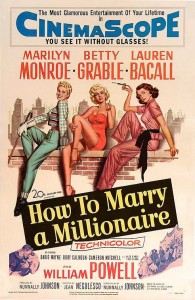
Synopsis:
Three golddigging models (Lauren Bacall, Marilyn Monroe, and Betty Grable) share a chic-chic apartment in New York, in hopes of snaring millionaire husbands.
|
|
Genres, Themes, Actors, and Directors:
- Betty Grable Films
- Cameron Mitchell Films
- Dumb Blondes
- Gold Diggers
- Jean Negulesco Films
- Lauren Bacall Films
- Marilyn Monroe Films
- Millionaires
- Mistaken or Hidden Identities
- Models
- Romantic Comedy
- William Powell Films
Response to Peary’s Review:
This remake of 1932’s The Greeks Had a Word for Them was meant to capitalize on Marilyn Monroe’s popular turn as “dumb blonde” Lorelei Lee in Gentlemen Prefer Blondes (released earlier that same year). While Monroe’s performance here as “the hopelessly nearsighted bubblehead who won’t wear glasses around men” remains the most enjoyable in the film, Bacall and Grable do fine as well — and I disagree with Peary that Grable comes across as “annoying” (indeed, she’s responsible for some of the funniest moments in the film). I also disagree with Peary that the movie “chastises golddigging women” while presenting it as “perfectly acceptable for men to chase women because they’re pretty” — this is actually an equal-opportunity critique of the tricky interplay between romance and money; indeed, William Powell as an older man who loves gold-digging Bacall but is hesitant to marry her (he gives a “characteristically classy performance”) is evidence of this. Ultimately, while How to Marry a Millionaire may be, as Peary notes, simply “pleasant fluff”, it remains a worthy, must-see film.
Redeeming Qualities and Moments:
- Marilyn Monroe’s delightful performance as the nearly-blind Pola: “Men aren’t attentive to girls who wear glasses!”
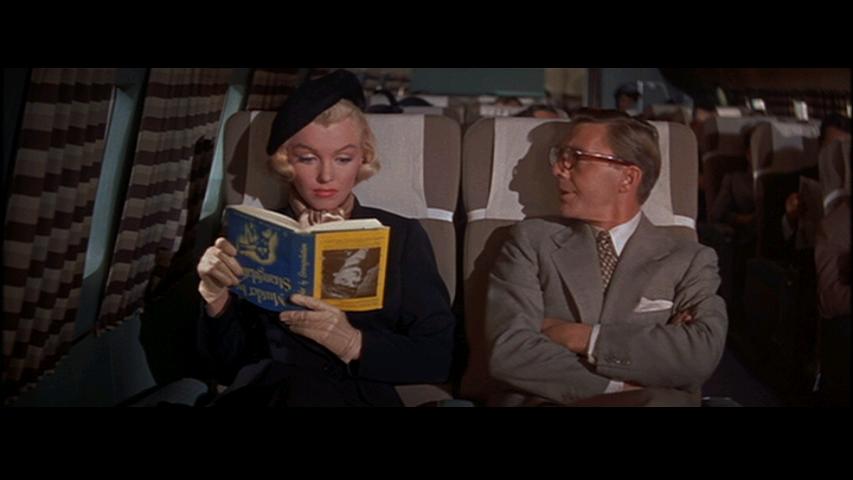
- Betty Grable as upbeat “Loco”

- Lauren Bacall as the uber-rational Schatze

- Cameron Mitchell as Tom Brookman, a deceptively wealthy man in pursuit of Bacall
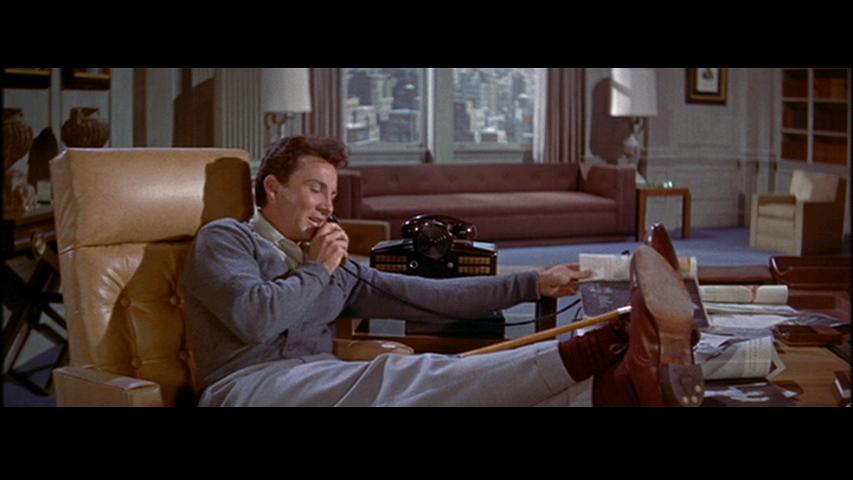
- William Powell as Bacall’s would-be older suitor
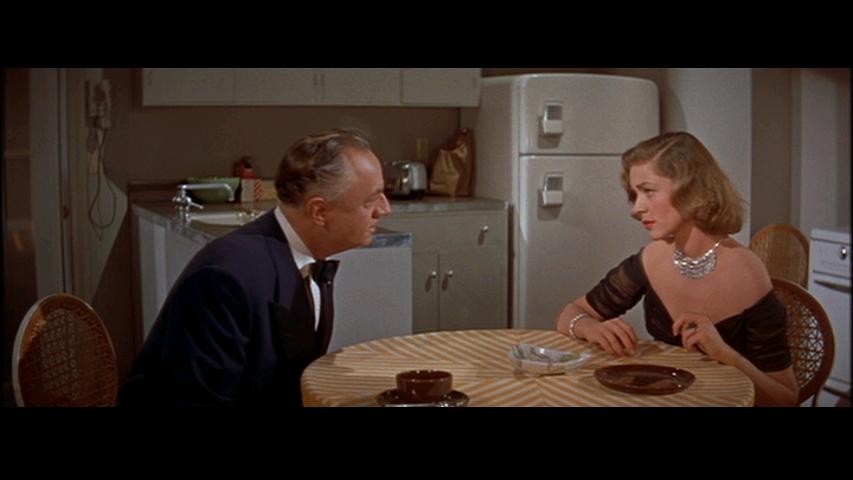
- Grable and her married escort (Fred Clark) discovering their divergent interpretations of the word “lodge”

- Monroe’s initial encounters with Alexander D’Arcy (the original occupant of their apartment)
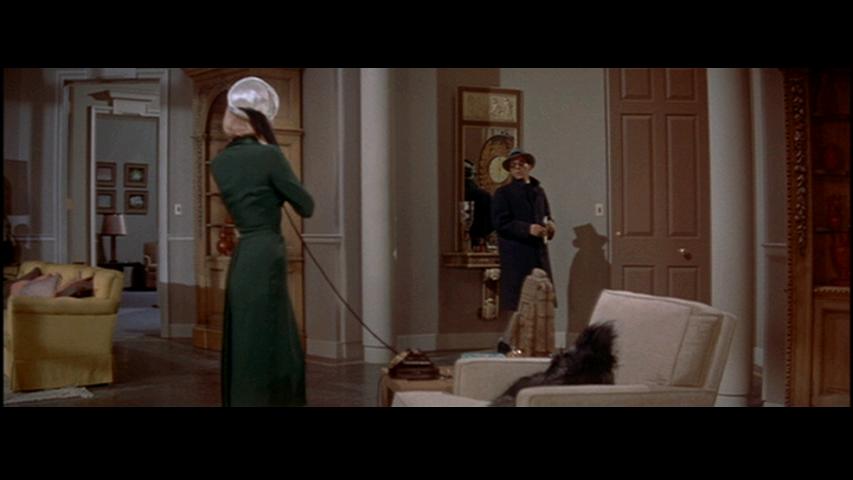
- Fun camarederie between the three golddigging friends
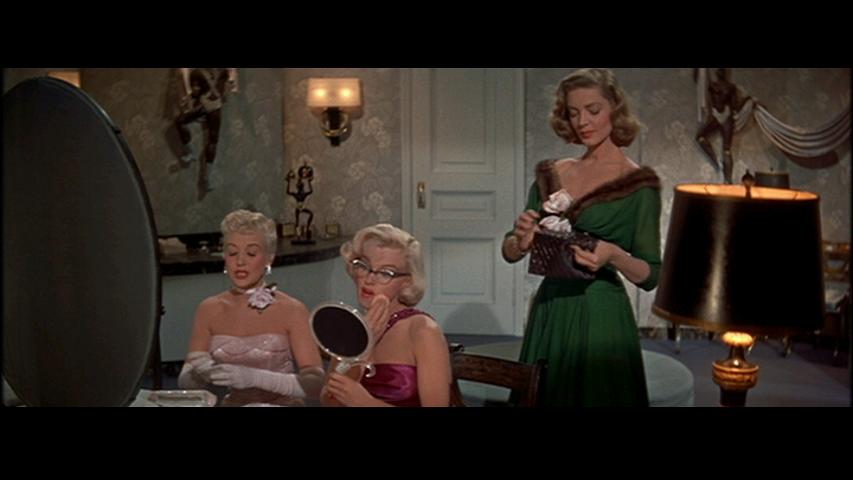
Must See?
Yes. While not entirely successful, this film holds historical importance as one of the first CinemaScope pictures, and should be seen by every film fanatic.
Categories
- Historically Relevant
- Noteworthy Performance(s)
Links:
|









One thought on “How to Marry a Millionaire (1953)”
Hadn’t seen this in years and had just about forgotten it completely. Seeing it again, I’m not surprised little stayed in memory – it’s a rather dull, forgettable film. Not a must.
The one possible reason for seeing it may be to compare it against the immensely successful ‘Gentlemen Prefer Blondes’ in order to understand why one film works and the other doesn’t.
At root, the two are rather similar and set out to offer light entertainment via the tale of women in search of men. The main difference: in ‘GPB’, there are two female leads and only one of them is intent on landing a wealthy guy; in ‘HTM…’, all three female leads put considerable financial security first.
From there, the glaring differences enter. ‘GPB’ has an infinitely better, funnier script and is dotted with sparkling musical numbers. ‘HTM…’ is virtually without wit (tho Monroe gets some mileage from her character’s nearsightedness) and only substitutes musical numbers with a rather unnecessary fashion show midway.
Oddly, whereas the male characters in ‘GPB’ don’t come off as well as the female protagonists (which is just as well; it’s very much not their movie), the men in ‘HTM…’ outshine their co-stars. Granted, their parts are written with more definition. As well, without memorable things to say or songs to distract, the prominent, superficial nature of the women in ‘HTM…’ comes front and center. For the bulk of the film, they’re less likeable than their zany ‘sisters’ in ‘GPB’.
At this point in their directorial careers, the best work of both Jean Negulesco (‘HTM…’) and Howard Hawks (‘GPB’) was behind them. Fortunately, with ‘GPB’, Hawks had all of the ingredients for a souffle and knew how to serve it piping hot. If only the production schedule for the two films had been reversed: Hawks would then have also had CinemaScope, which is pretty much the saving grace of ‘HTM…’.